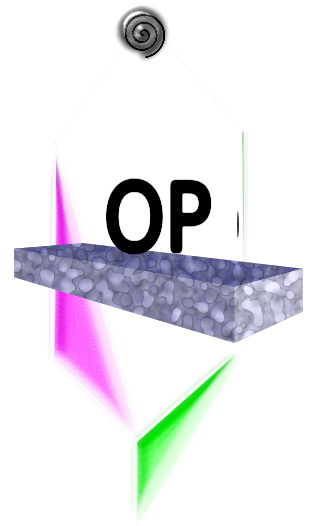










 |
 |
 | ||||||
 | ||||||||
 |
 |
 |
 |
 |
 |
 | ||
|
Light in a random medium | |
Light interaction with random media is ubiquitous in nature and has found vast
applications in applied sciences. Well-known examples for random media are
biological tissue, atmosphere, ocean, and colloidal systems. The emergent light
after interaction with a random medium (transillumination or backscattering) has
been actively pursued as a means of non-invasively probing the internal structure
of the random medium in the pasr decades (photonic diagnostics of random
media).
The propagation of multiply scattered light in random media follows a universal law and light diffuses after a sufficient number of scattering events has occured. Light diffusion is characterized by one length scale – the transport mean free path, lt, i.e., the distance over which the initial light propagation direction is randomized. By treating analytically the propagation of polarized light in turbid media as a random walk of vector photons, I have identified two additional length scales governing depolarization of the multiply scattering polarized light: (1) the characteristic length, lp, for polarized light to become isotropic in its linear polarization and propagation directions [1, 2], and (2) the characteristic length, lx, for circular polarized light to lose its helicity [3]. This also leads to a simple analysical model for the circular polarization memory effect of light. Other highlights of my relevant past work include a cumulant transport model for radiative transfer, providing a much more accurate transport model than the commonly used diffusion approximation [4, 5, 6]; an Electric Field Monte Carlo method (EMC) to simulate propagation, decoherence and depolarization of polarized light in random media; and low coherence enhanced backscattering of light [7, 8].
Figure 1: Propagation of a collimated beam in random media. The x,y
coordinates are measured in, lt, the transport mean free path.
On-going research projects:
[1] M. Xu, W. Cai, M. Lax, and R. R. Alfano. Stochastic view of
photon migration in turbid media. arXiv:cond-mat/0401409, 2004.
[2] M. Xu and R. R. Alfano. Random walk of polarized light in turbid
media. Phys. Rev. Lett., 95:213905, 2005.
[3] M. Xu and R. R. Alfano. Circular polarization memory of light.
Phys. Rev. E, 72:065601(R), 2005.
[4] M. Xu, W. Cai, M. Lax, and R. R. Alfano. A photon transport
forward model for imaging in turbid media. Opt. Lett., 26(14):1066–1068,
2001.
[5] M. Xu, W. Cai, M. Lax, and R. R. Alfano. Photon migration in
turbid media using a cumulant approximation to radiative transfer. Phys.
Rev. E, 65:066609, 2002.
[6] W. Cai, M. Xu, and R. R. Alfano. Analytical form of the particle
distribution based on the cumulant solution of the elastic Boltzmann
transport equation. Phys. Rev. E, 71:041202, 2005. (10 pages).
[7] Min Xu. Low coherence enhanced backscattering beyond diffusion.
Opt. Lett., 33:1246–1248, 2008.
[8] Xiuwei Zhu, Xiaolei Lin, Zili Cao, Bixin Zeng, and M. Xu. Electric
field monte carlo study of coherent complex light in turbid media. In
Biomedical Applications of Light Scattering IX, volume 9333 of Proc.
SPIE, page 933316. SPIE, 2015. http://dx.doi.org/10.1117/12.2082605.
|